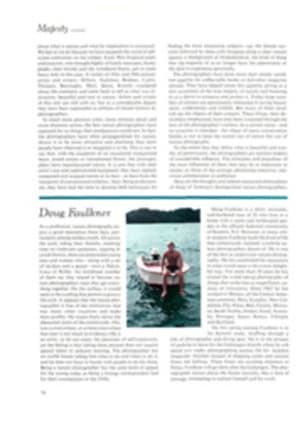
Far-out Trip in a Model Z
A brisk, sharp wind was blowing from the southeast, and along the vast stretch of wide, sandy Dutch beach trundled an unwieldy contraption of stout oak beams held together by wooden dowels and iron braces. Above it two huge sails billowed forward from sturdy ash masts, and inside sat 26 amazed and slightly terrified passengers gripping their seats as the sand dunes rushed by them at unimaginable speed.
The year was 1600 and the intrepid voyagers were risking their lives in a most novel vehicle, a zeilwagen—what we would call a sand yacht. Their 54-mile trip took two hours, at an average speed greater than man had ever achieved on wheels. In fact the speed of the zeilwagen would not be bettered until the development of the steam locomotive 250 years later.
The builder of the machine was Simon Stevin, a 52-year-old native of Bruges. Stevin was a Renaissance man of restless energy and inquiring mind whose studies of hydrostatics contributed much to the Dutch expertise in reclaiming land from the sea and, having reclaimed it, keeping the water pumped out of it. He set out a logical musical scale divided into 12 exact semitones, anticipating Bach by a century. He was also responsible for the earliest truth-in-lending measure. In his day, bankers kept the details of interest tables a dark and profitable secret, but Stevin worked up a chart showing just how much the interest would be each year on a thousand-guilder loan. He wrote treatises on plain and spherical trigonometry and the theories of perspective, and in his spare time he settled such interesting little questions as which of two carpenters was carrying the heavier part of a burden suspended between them.
Stevin was highly regarded by The Netherlands government, and among his many responsibilities was the tutoring of Maurice, Prince of Orange, second son of William the Silent. Later, when Maurice reached manhood, Stevin became his scientific adviser, and it was in that capacity that he began attending to accounts from China of that country's many ingenious inventions. These included wheelbarrows assisted by sails, and "coches and wagons" propelled by sail, "made with such industrie and policie that they doe governe them with great ease." (Egyptologists believe a land yacht seven feet in length was used west of the Nile as long ago as 1800 B.C.) In any case, it seems appropriate that the Dutch, a wind-oriented nation if ever there was one—being not only a maritime power but a prime exploiter of the breeze for powering windmills—should have been the first Europeans to experiment with harnessing wind for motion on land.
Stevin probably constructed at least two zeilwagens. The smaller, presumably the prototype, appears to have been a six-to eight-seater, perhaps seven or eight feet long, with a 12-foot mast amidships that carried one square sail and a gay royal flag at the top of its mast. According to the only reliable drawing of the vehicle, it was steered by an enormous tiller from the front pair of heavy oaken, 12-spoked wheels.
By contrast, the larger 26-seater was a noble machine—15 or more feet long, six feet wide, with two masts, each carrying a large square sail. The main timbers of the chassis appear to be 9" by 9", at least, and one can imagine the surprise of the peasants and fisherfolk as this juggernaut roared northward up the beach at 25 or more miles an hour, spewing sand from beneath its massive wheels, with a low thunderous noise issuing from the strained metal of the plain iron axles.
This zeilwagen was steered from the rear, and Stevin had equipped it with elaborate rigging to make the mainsail trim itself as the back axle moved. By all accounts the machine was not much good unless running dead before the wind, although at one point the steersman (in this case Prince Maurice himself) had a good deal of fun putting the tiller sharply to his right and whisking the ungainly vessel hard a-port, straight toward the water, only to correct northward at the last possible second.
It is unlikely that any of the passengers had ever traveled at even half the speed of the zeilwagen, for in good going it must have touched nearly 40 miles an hour. "Men which ran before seemed to run backwards, and places which seemed a huge way off, were passed by almost in a moment" were the impressions of one astounded zeilwagen passenger. Bystanders found themselves unable to recognize the faces of passengers, so much of a blur did the speed of the zeilwagen induce. "It disappeared from sight almost at the moment it was sighted," gasped one.
Hugo Grotius, 17, who was one of the inaugural passengers, wrote: "You must believe me when I say that zeilwagens nearly escape the winds that move them." Later in life, still vastly impressed by Stevin's device, Grotius composed no fewer than 22 Latin epigrams—mostly very boring—in its praise, and in ensuing years, whenever Dutch rulers wished to awe important visitors, a ride in the zeilwagen was arranged.
At the end of 1794 the revolutionary French invaded Holland, and frivolities such as sand yachts were forgotten. The smaller machine had long since disappeared, and now the larger and more important one was sold at an official sale of public property. A Dutch fisherman bought it for a trifling sum and stored it in a shed. In 1811, when the chariot was over 200 years old, the fisherman's shed collapsed. Times were poor and fuel was scarce, so the man demolished both shed and zeilwagen. Two years later, when William of Orange, later King William I, ousted the French, he inquired after the machine—only to be told that it had been destroyed.
Would Simon Stevin have been flattered to learn that his zeilwagen was still in demand after two centuries? Probably not. That austere man of science had regarded it as no more than a mechanical toy. Among all his published works—the notes, theories, dissertations, proofs and patents—there is not one word mentioning this, his most famous creation.

